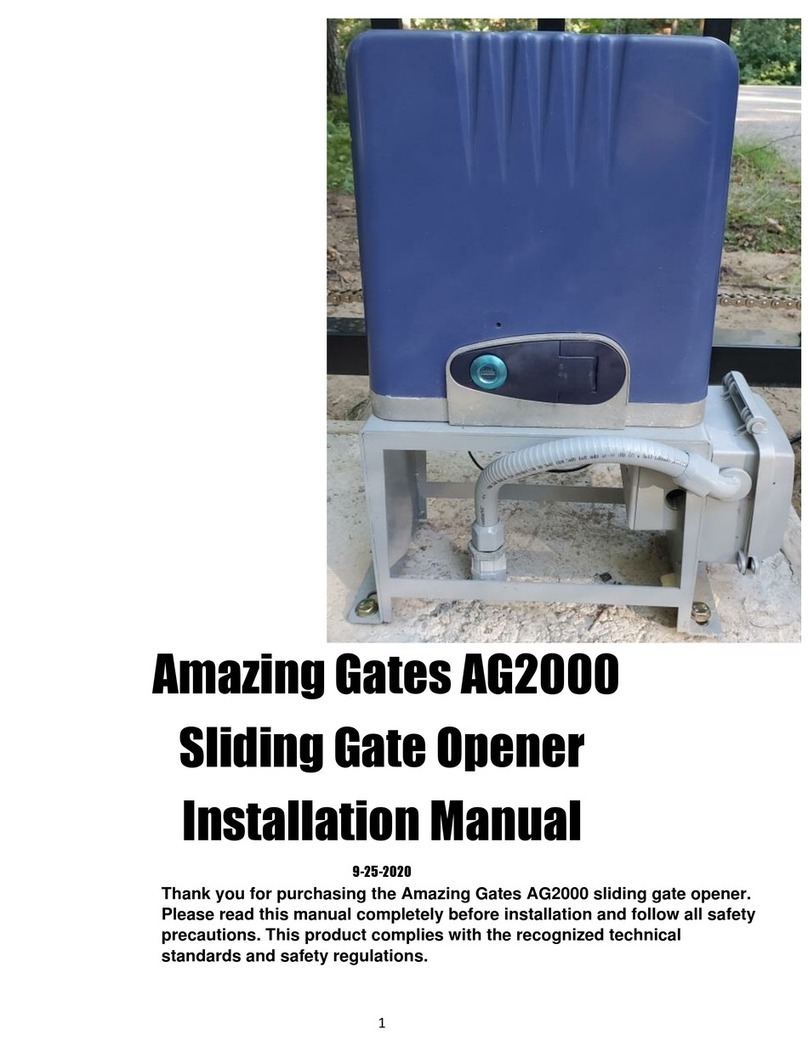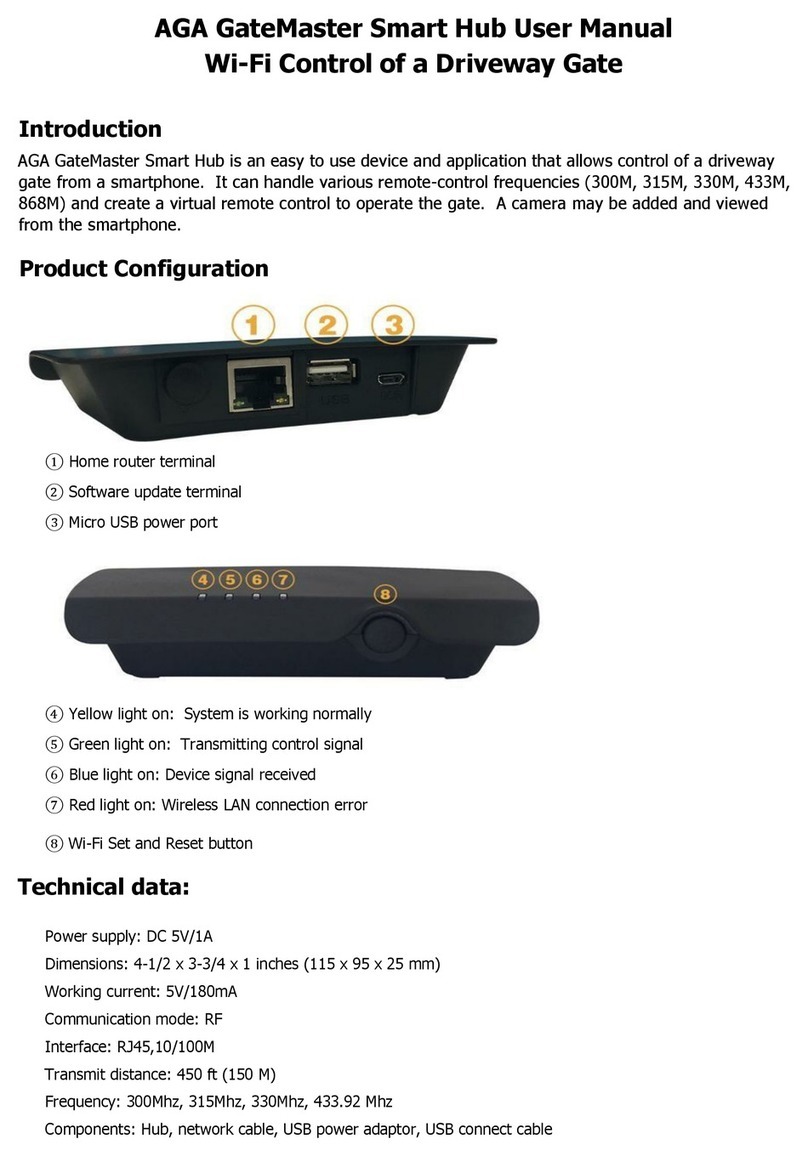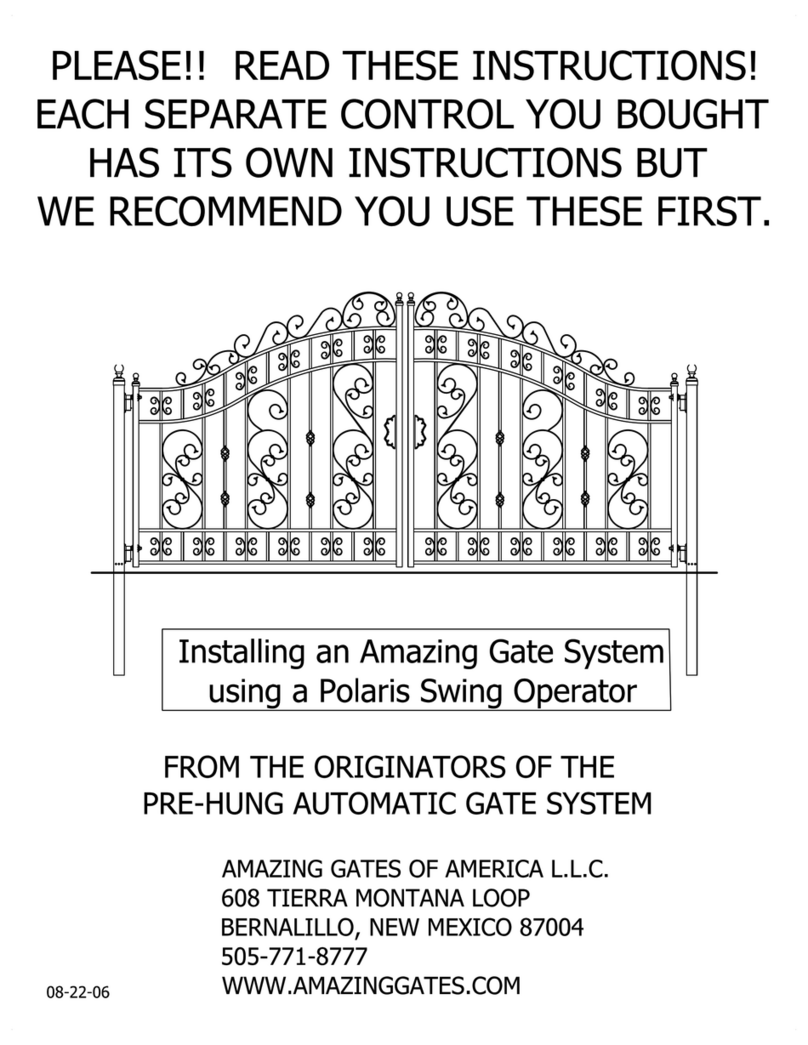
9-28-20
Amazing Gates
Swing Gate Opener Manual
AG900HD
Contact Information:
Amazing Gates of America, LLC
8617 Paseo Alameda NE
Albuquerque NM 87113
Website: www.amazinggates.com
Customer Service 800-234-3952
Hours: M-F 8:00 a.m. – 5:00 p.m. MST
Technical Support 505-404-2219
Hours: M-F 7:00 a.m. – 4:00 p.m. MST
READ ALL INSTRUCTIONS CAREFULLY AND COMPLETELY
PRIOR TO INSTALLATION AND USE OF OPERATOR.
This gate operator produces a high level of force. Stay clear of the unit
while it is operating and exercise caution at all times. All automatic gate
operators are intended for use on vehicular gates only. This equipment is
similar to other gate or door equipment and meets or exceeds
Underwriters Laboratory Standard 325 (UL 325). However, gate
equipment has hazards associated with its use and therefore by installing
this product the installer and user accept full responsibility for following
and noting the installation and safety instructions. Failure to follow
installation and safety instructions can result in hazards developing due to
improper assembly. You agree to properly install this product and that if
you fail to do so Amazing Gates of America, LLC (“AGA”) shall in no
event be liable for direct, indirect, incidental, special or consequential
damages or loss of profits whether based in contract tort or any other legal
theory during the course of the warranty or at any time thereafter. The
installer and/or user agree to assume responsibility for all liability and use
of this product releasing Amazing Gates of America, LLC (“AGA”) from
any and all liability. If you are not in agreement with this disclaimer or
do not feel capable of properly following all installation and safety
instructions you may return this product for full replacement value.































